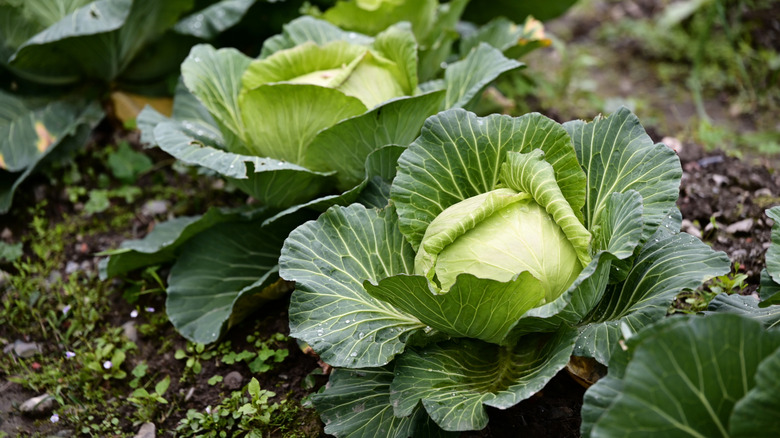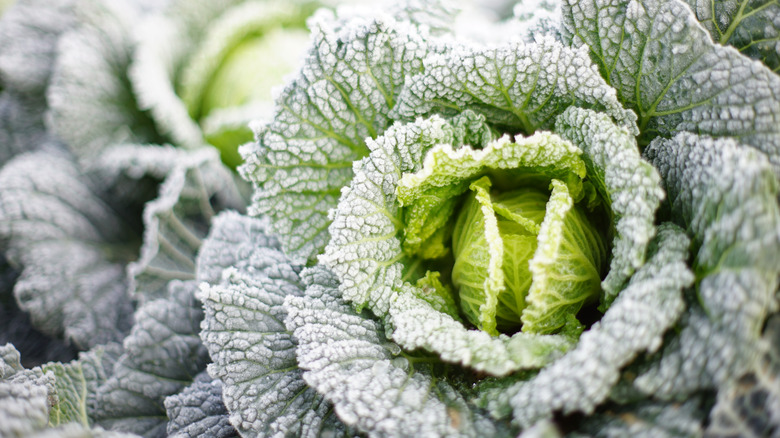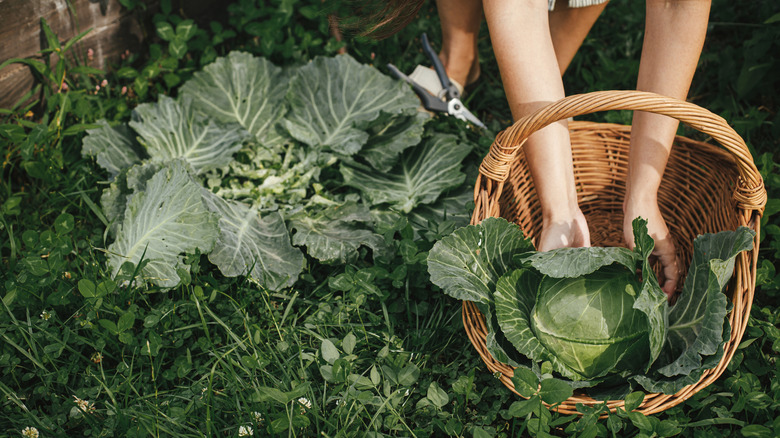How (& When) To Harvest Cabbage For The Best Flavor And Texture
Few vegetables are as perfect as the cabbage. It has many uses in the kitchen, it is easy to grow, and it is one of those veggies that will happily grow in clay soil. Also, there are a ton of varieties to choose from, with some ready to be harvested in as few as 45 days. But how and when you harvest your cabbage is where the trick lies. Even though you can harvest cabbage any time after the heads develop, if you want the best taste and texture from your veggies, you want to harvest them at just the right time.
So, how do you tell it is time to harvest your cabbage? Start by looking at the variety you have planted. If it is an early variety grown in the spring, it will be ready to harvest in about 45 to 70 days. However, if it is one of the late varieties, which are intended for fall and winter growing, it might take about 100 days. Once you figure that out, do a firmness test. The heads should feel solid and firm to hand pressure. If it feels loose, leave it in the ground. But don't wait too long. The heads might split open at any time once mature. Also, the way you harvest cabbage matters, too. Don't just yank or twist to pull out the heads. It could bruise your veggies, which can ruin their texture and lead to soft rot. Instead, use a sharp knife to make some clean cuts around the outer head leaves.
The right time of year to harvest early and late cabbage
Depending on what variety you are growing and where you are growing it, the ideal time to harvest the cabbage will vary. If you are growing an early variety, plan to harvest it before it gets too hot outside between spring and summer. Cabbage is a cool-season crop, and it doesn't do well in the hot weather. There are some varieties that can withstand some summer heat, but they might be hard to find.
If you are growing late season cabbage in the fall or even into winter, then you should let it stay out in the cold before the harvest. A light frost makes them taste sweeter. That's because when temperatures drop, plants start to accumulate sugars inside themselves. This is a sort of built-in defense mechanism that helps them build cold tolerance. It is also the reason why your garden veggies taste so much sweeter in the winter. Just be sure to bring them in before the first hard freeze, which will damage the heads.
Harvesting cabbage for the best taste and texture
Once the right time comes to harvest your cabbage, you don't want to wait too long. That is because once the heads are mature, a sudden rain may cause your cabbage to split open, which may make it unusable. The exact time of the day when you harvest cabbage is another critical factor. For best freshness and texture, pick them up in the morning. Vegetables replenish the moisture that they lost during the day overnight. This makes them crisper when harvested early in the day. And once you get the timing right, it is all about technique.
Other than handling the cabbage gently when harvesting, leave two to three wrapper leaves attached. They will act as a natural buffer, handling damage and dehydration, keeping the harvest fresh and crisp. Lastly, if you are planning to store your cabbage before use, avoid storing with ethylene-producing fruits to avoid a bitter taste, and make sure you know how to cure vegetables before storage.


